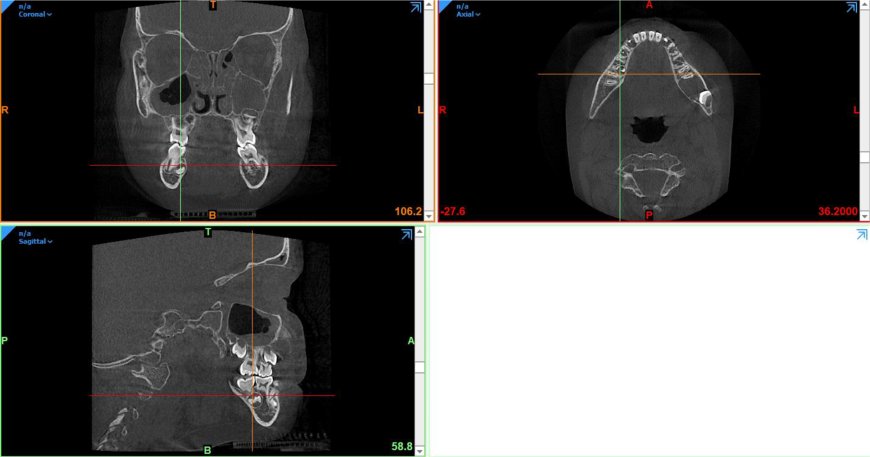Enhancing Pediatric Dentistry Education with 3D-Printed Models
This study explores the effectiveness of 3D-printed models in pediatric dentistry education for vital pulp therapy and local anesthesia training. Results show that these models significantly improve students' understanding and confidence in performing pediatric dental treatments. By integrating these models into dental curricula, gaps in simulation-based education can be addressed, leading to better clinical preparedness.

This study aimed to evaluate anatomically accurate 3D-printed educational models that simulate pediatric dental scenarios for vital pulp therapy and local anesthesia training, using a structured questionnaire administered to students after hands-on sessions. The findings demonstrated that these models significantly improved students’ understanding of anatomical structures, procedural accuracy, and confidence in performing pediatric dental treatments. Participants highly rated the models for their educational value, realism, and ability to enhance hands-on learning.
Although 3D printing is widely used in dental education, its application in pediatric dentistry is still limited. A recent scoping review showed that most studies using 3D-printed models focus on areas such as prosthodontics, endodontics, and maxillofacial surgery. Pediatric dentistry was represented in only a single study. This may be due to the relatively recent shift toward age-specific simulations, which are particularly important in pediatric dentistry because of anatomical and behavioral differences in children. The strong positive responses from participants at different educational levels in our study emphasize the importance of integrating pediatric-focused 3D-printed models into dental curricula to address existing gaps in simulation-based education and to facilitate a smoother transition from theory to clinical practice in pediatric patient care.
The application of the IANB poses a challenge to local anesthetic injections due to the delicate injection technique. Various educational approaches have been explored to enhance students’ competence and confidence in local anesthesia administration. These include student-to-student training, simulation models, virtual and augmented reality, and digital educational tools. Simulation models, in particular, have shown promising results in providing a safe, controlled, and low-stress environment where students can practice injection techniques repeatedly. Studies have demonstrated that simulation-based training, including local anesthesia and 3D-printed models, enhances students’ confidence, instrument-handling skills, and anatomical landmark identification, suggesting its effectiveness in improving clinical preparedness. To the best of our knowledge, no studies have investigated the use of 3D-printed models for local anesthesia training in pediatric dentistry.
The goal of this study was not to quantitatively validate the anatomical accuracy of anesthetic delivery but to demonstrate the feasibility and educational potential of a 3D-printed model for training purposes. The effectiveness of the model was assessed based on participants’ perceptions during hands-on use and their survey responses. Participants found the 3D-printed local anesthesia model highly effective in enhancing anatomical knowledge, confidence, and clinical preparedness, particularly for less experienced students.
Phantom or extracted teeth have been available for students’ education in preclinical and clinical courses in pediatric dentistry. While these teeth are ideal and standardized, they lack realism and fail to replicate the complexity of individual dental arch configurations encountered in real patient scenarios. 3D-printed training models offer a reproducible, safe, and customizable learning environment that simulates clinical conditions more effectively, making them especially effective for preparing students for complex real-life scenarios.
Several digital technologies have been developed to improve procedural training in dentistry. 3D-printed models have been reported to enable physical manipulation with real instruments, providing a more authentic hands-on experience. In this study, 3D-printed teeth were perceived as the most educationally valuable, engaging, and versatile for hands-on practice. While they outperformed traditional phantom models in terms of engagement and simulation quality, they still fell short of replicating the tactile realism provided by extracted teeth.
Most students found 3D-printed teeth helpful in understanding pulp therapy concepts, procedural realism, and skill acquisition. The models were particularly effective in enhancing understanding of pulp therapy concepts, procedural realism, and skill acquisition, demonstrating their value as an educational tool across different educational levels.
3D-printed educational models offer a cost-effective and scalable solution suitable for integration into preclinical dental education worldwide. As 3D printing technologies evolve, their affordability and scalability are expected to further improve, making them an essential educational tool in dental training.
This study has limitations that should be considered, and future research should focus on addressing these limitations to enhance the educational impact of 3D-printed models in dental education.
According to the source: BMC Medical Education.
What's Your Reaction?
 Like
0
Like
0
 Dislike
0
Dislike
0
 Love
0
Love
0
 Funny
0
Funny
0
 Angry
0
Angry
0
 Sad
0
Sad
0
 Wow
0
Wow
0





















































































































































































